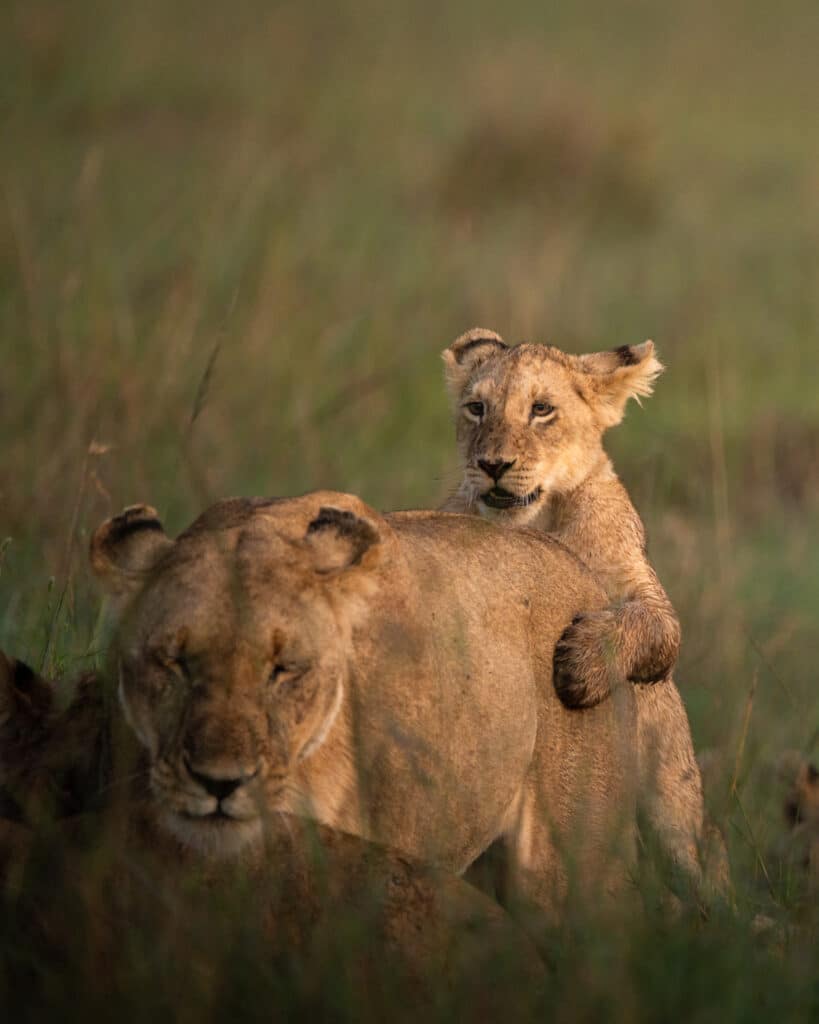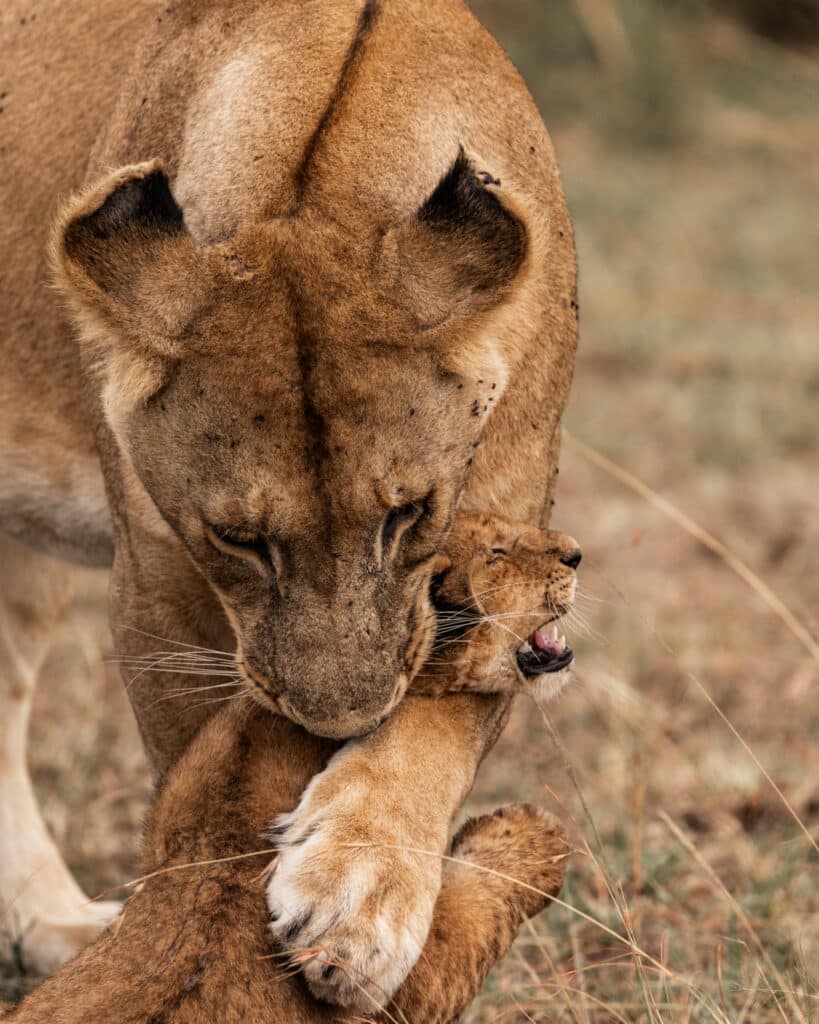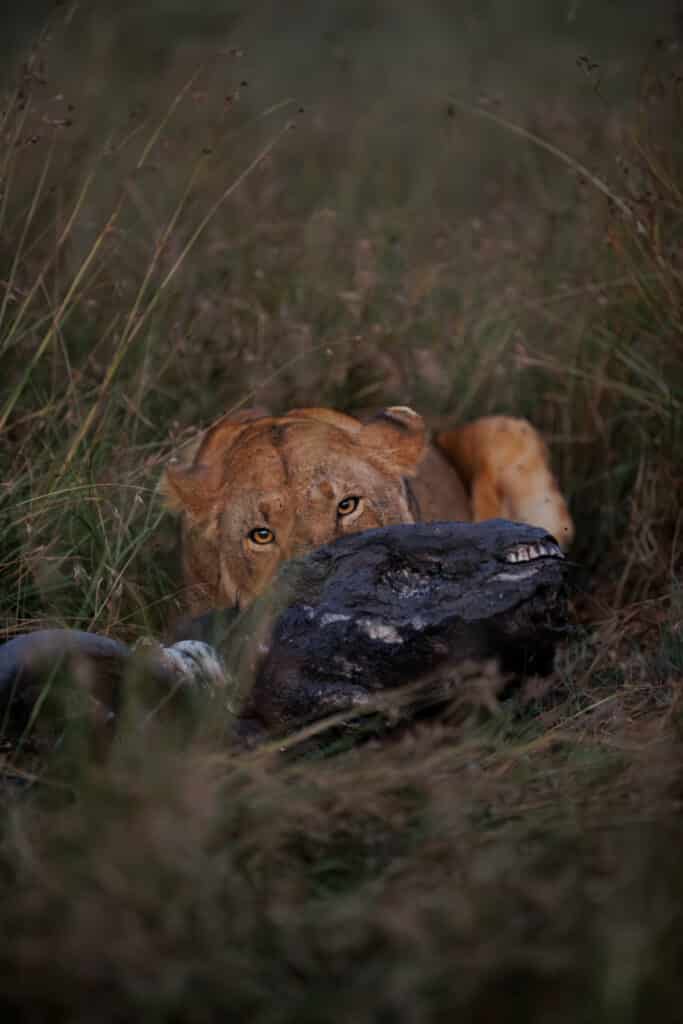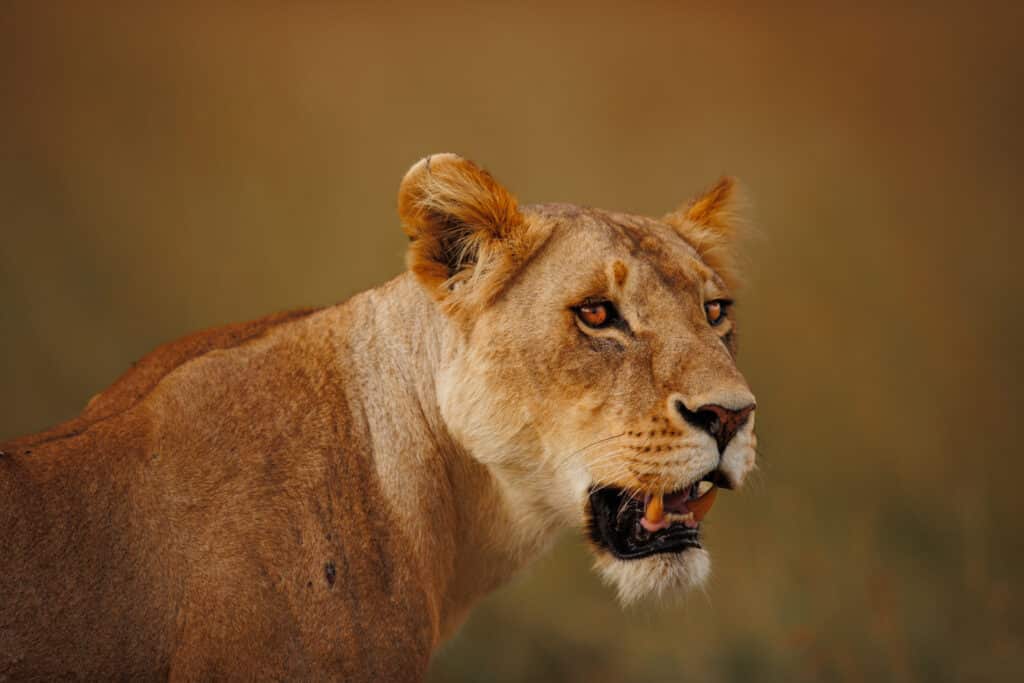When visitors arrive in the Masai Mara, their hearts often yearn to sight the renowned Big Five — the elephant, leopard, rhinoceros, Cape buffalo and ‘King of the Jungle’ — the lion. Rooted in history, the term Big Five harkens back to early game hunters and what they considered the most difficult and potentially fatal animals to encounter on foot. From majestic tusks to imposing horns, they typically focused on the male counterparts of each species.

When we envision a lion, it is predominantly the male with his flowing mane and regal posture, exemplifying traits such as boldness, courage, confidence and power. The male lion has been an enduring symbol for centuries, appearing on flags, coats of arms, and even worn by kings and queens as a sign of their authority.
In the midst of this spotlight lies a story that often gets overlooked: that of the lioness, the driving force behind the pride’s survival. While the male may flaunt his signature mane and bear the scars of fierce battles, the lioness radiates a different, yet equally captivating grace. She is a figure of strength, but her strength is rooted in her gentleness.

While she is an expert hunter able to outsmart her prey and take down a target twice her size, she is also a devoted mother, protecting her cubs and teaching them the skills they need to survive. The lioness displays a powerful balance between ferocity and compassion. She invests her energy in meticulous grooming that forges unbreakable bonds, and her strength is manifested in the unity she fosters and the leadership she provides.




The lionesses of the pride collaborate to take care of all their cubs and each other, exhibiting a strong sense of family, community, and solidarity; they act in unison for the benefit of the group. While the role of the male as protector and supplementary muscle during hunts is vital, it is the lionesses who shoulder the majority of responsibilities within the pride, even when the male is absent, orchestrating an intricate dance of survival. While they are not always rewarded with a share of the spoils, by allowing the males to feast first, they demonstrate their selflessness and commitment to the greater good of the pride.


The Fig Tree Pride boasts a remarkable group of lionesses that have defied adversity while raising their young. Their journey took an unexpected turn when they lost both their pride’s males, Olope and Olbarikoi, in territorial disputes. When a pride loses their males, the cubs are most at risk. Rival males kill off any offspring that is not theirs in order to take over a pride and establish their own bloodline with the remaining lionesses. Faced with this ominous situation, the Fig Tree lionesses adapted and assumed dual roles as both protectors and nurturers of the pride.

Stripped of the security traditionally provided by pride males, they relied on their grit and collective strength to navigate the harsh wilderness. They avoided risky areas and remained elusive until their cubs could mature, vanishing for several months from their original territory. Their triumphant return is a testament to these lionesses’ unwavering resilience and competence in preserving what had once appeared to be a pride on the brink of disaster.

As the sun sets on the Mara, the lioness stands tall and proud, a symbol of strength and perseverance. She is the epitome of courage, and her unyielding spirit is an inspiration to all. She is a leader who commands respect, an unrelenting force that will protect her family at any cost. Let us applaud her and redirect our admiration. Her story endures but our appreciation of her is just beginning.
Photo credits: Eric Averdung, Imara Njeri, Japheth Supeyo